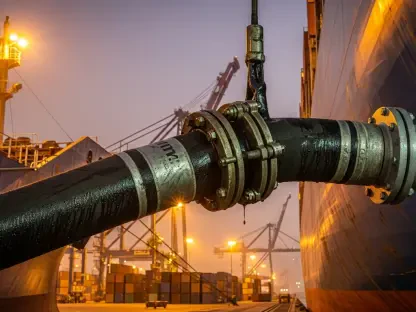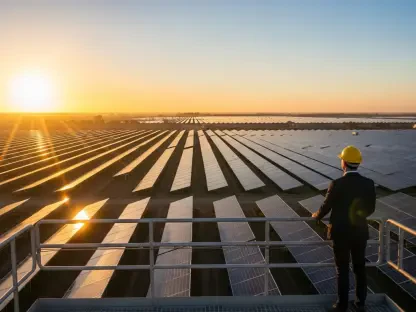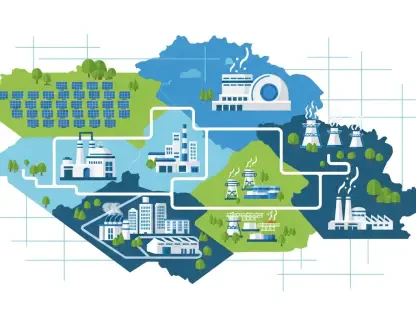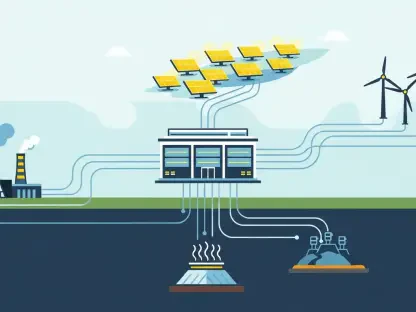Cheniere Energy’s recent decision to double its liquefied natural gas (LNG) capacity at Corpus Christi provides an illuminating window into the dynamic energy landscape. With countries gravitating towards cleaner energy solutions, the demand for LNG is surging, and Cheniere has taken a strategic step to capitalize on this trend. This market analysis delves into Cheniere’s decision, examining its broader implications for the energy sector and identifying future market trajectories.
Strategic Insights Driving Cheniere’s Expansion
Cheniere Energy’s strategic move to enhance its LNG output in Corpus Christi is more than just meeting current demand; it’s a targeted effort to solidify its position as a top-tier player in the global energy market. The expansion, buttressed by the construction of Midscale Trains 8 & 9, aims to ramp up Cheniere’s capacity to 90 million metric tonnes annually. This decision aligns with the global push towards cleaner energy sources and positions Cheniere advantageously in a competitive market. The collaboration with Bechtel Energy signals a commitment to timely project execution and incorporates a foresight-driven approach to tackling the rising demand for LNG.
Historical Context: Trends in U.S. LNG Production
To comprehend the recent expansion, it’s crucial to rewind and understand the trends in the U.S. LNG market. For over a decade, technological advancements and a relaxation in export policies—particularly observed during the Trump administration—have accelerated the growth of the LNG sector. As restrictions lifted, such as those moratoriums limiting exports, opportunities for expanding LNG infrastructure flourished. In this evolving landscape, Cheniere emerged as a pioneering leader, setting a precedent for future U.S. LNG exports. This historical context underscores how past developments have shaped Cheniere’s current strategy and enabled robust growth forecasting.
Forward-Thinking Growth Strategies
Doubling Capacity: Meeting a Global Energy Appetite
Doubling the LNG capacity at Corpus Christi is a tactical response to the booming global appetite for cleaner energy alternatives. The planned enhancements are designed to attract a broader market share, leveraging advancements and tapping into lucrative emerging markets. This ambitious expansion does not come without challenges, such as logistical and regulatory hurdles, but Cheniere’s comprehensive strategy seeks to address these while prioritizing environmental standards.
Phased Expansion Strategy: Synchronizing Growth with Market Needs
Employing a phased approach to expansion, Cheniere has opted for incremental growth, planning initial single-train capacities at both Sabine Pass and Corpus Christi, with a target of reaching 75 million metric tonnes per annum by the early 2030s. This strategy of careful scaling aligns with a methodical growth framework, allowing adaptation to market and technological evolutions. Such prudence in expansion mitigates potential risks and reflects a solid investment plan totaling over $25 billion, demonstrating confidence in long-term market viability.
Navigating Complex Regional and Global Dynamics
Cheniere Energy’s effort to expand requires adept navigation of complex regional demands and international markets. The U.S. benefits from abundant natural gas reserves, providing a distinct competitive edge. Moreover, emerging markets in Asia and Europe represent enticing prospects for Cheniere’s expanding reach. However, this necessitates a keen understanding of diverse regulatory climates and the agility to engage effectively with a broad spectrum of regional stakeholders, maintaining Cheniere’s competitive status.
Future Outlook: Innovations and Sectoral Changes
The expansion is aligned with burgeoning trends in the LNG industry, where technological progress is set to redefine operations through automation and digital tools. As global climate commitments push for environmentally friendly practices, potential regulatory shifts could impact future projects. The trend towards flexible, sustainable LNG solutions seems inevitable, and companies at the forefront of technological adoption, like Cheniere, are expected to lead this transition. These advancements not only bolster production capabilities but also enhance Cheniere’s potential contributions to a broader energy transformation.
Takeaways and Strategic Implications
Cheniere Energy’s expansion offers several takeaways critical for stakeholders in the LNG sector. Key lessons emphasize the necessity of strategic foresight, adaptability, and phased growth to successfully navigate changing market conditions. Leveraging innovation and prioritizing sustainable practices will be pivotal as companies seek to maintain and grow their market positions. This approach offers valuable insights for those looking to strengthen their presence in this evolving sector, ensuring lasting competitiveness.
Reflecting on the Future: Evolution of the Energy Market
Reflecting on Cheniere’s efforts to double capacity reveals critical insights into the future trajectory of the energy market. As global LNG demand escalates, Cheniere’s proactive measures are pivotal in setting a strong benchmark for industry growth. These initiatives demonstrate that comprehensive planning and adaptability to market demands are fundamental. By establishing foundational strategies and leading with innovation, Cheniere contributes to shaping a resilient energy sector prepared for future challenges.









